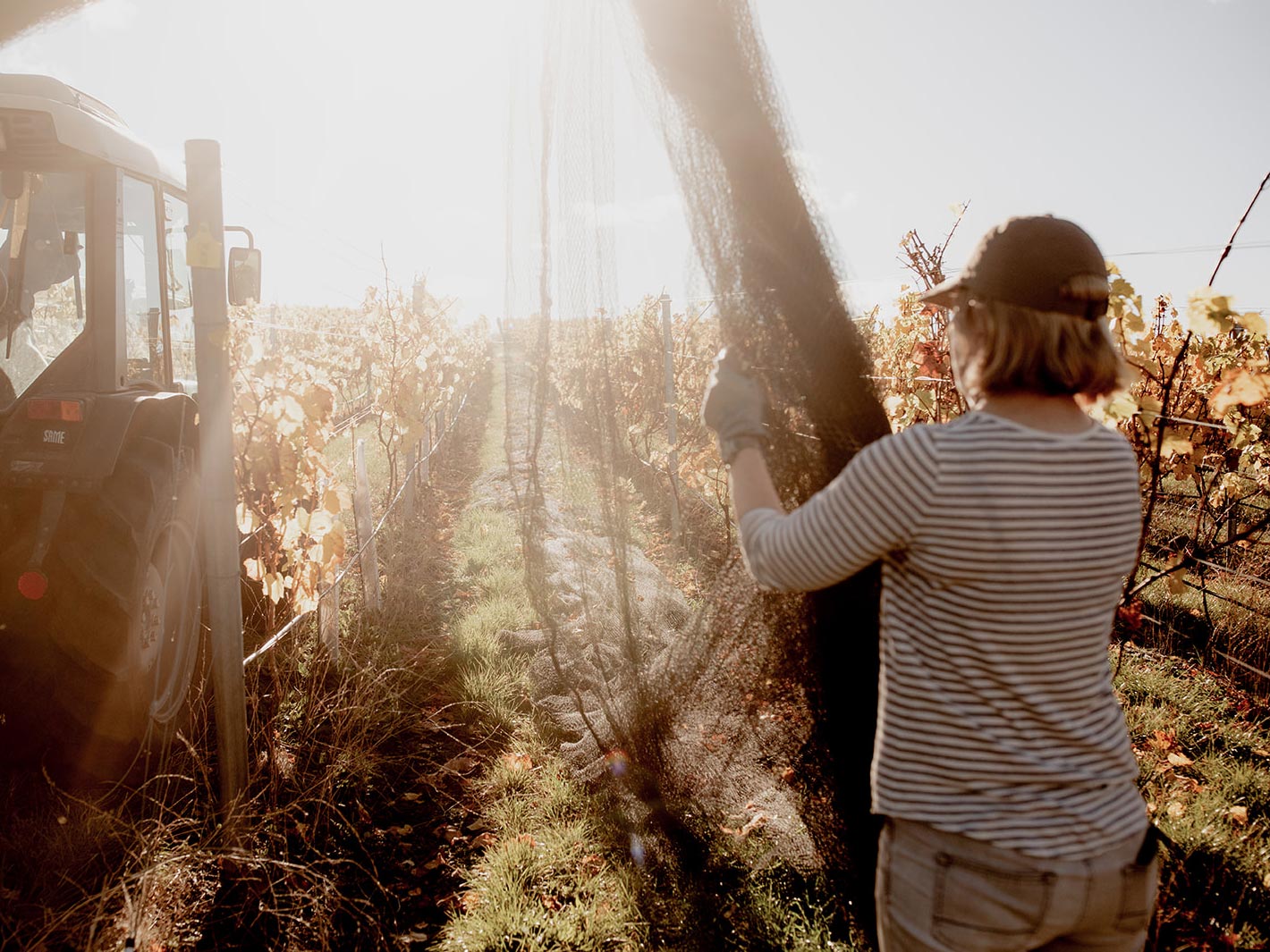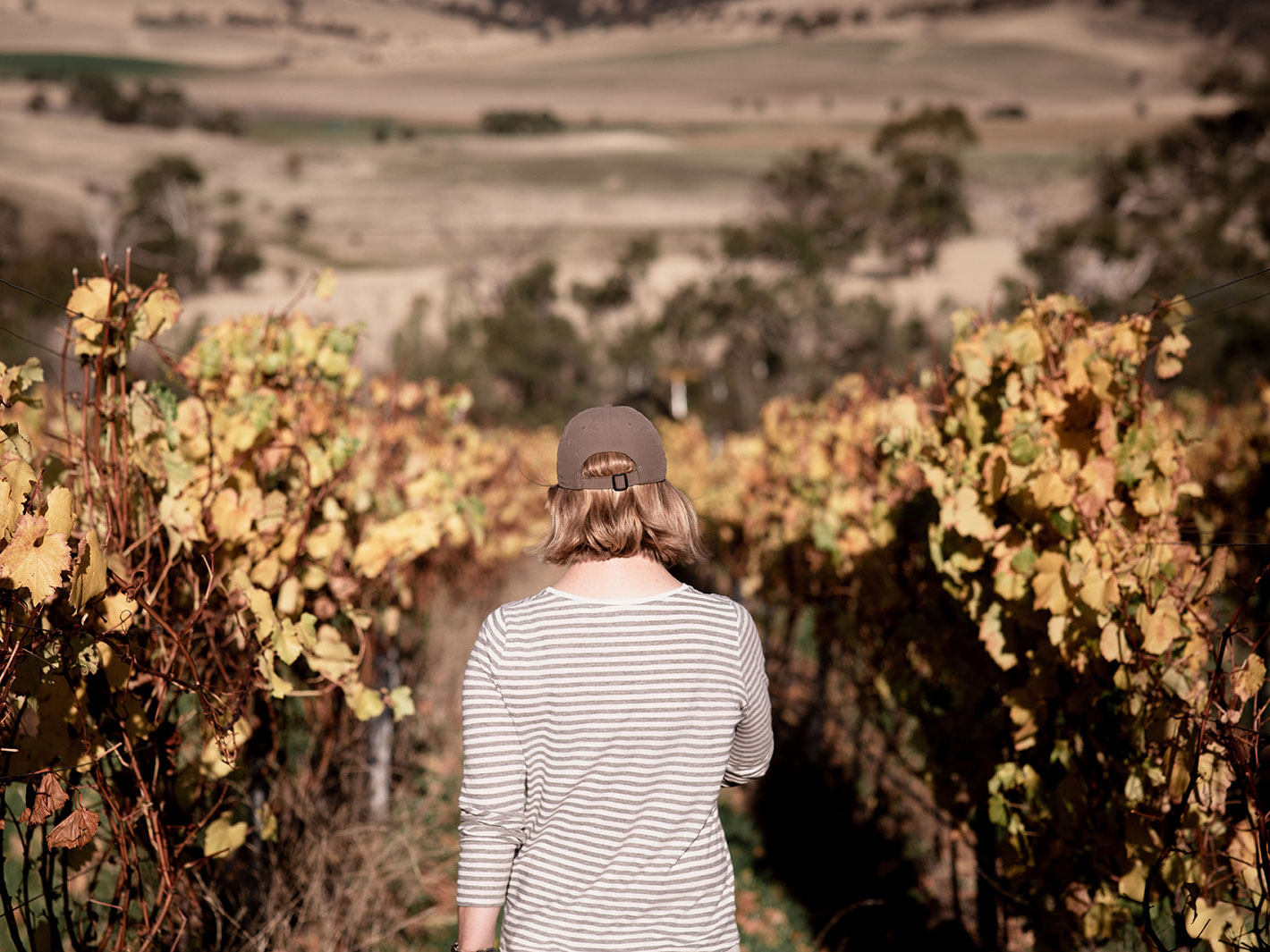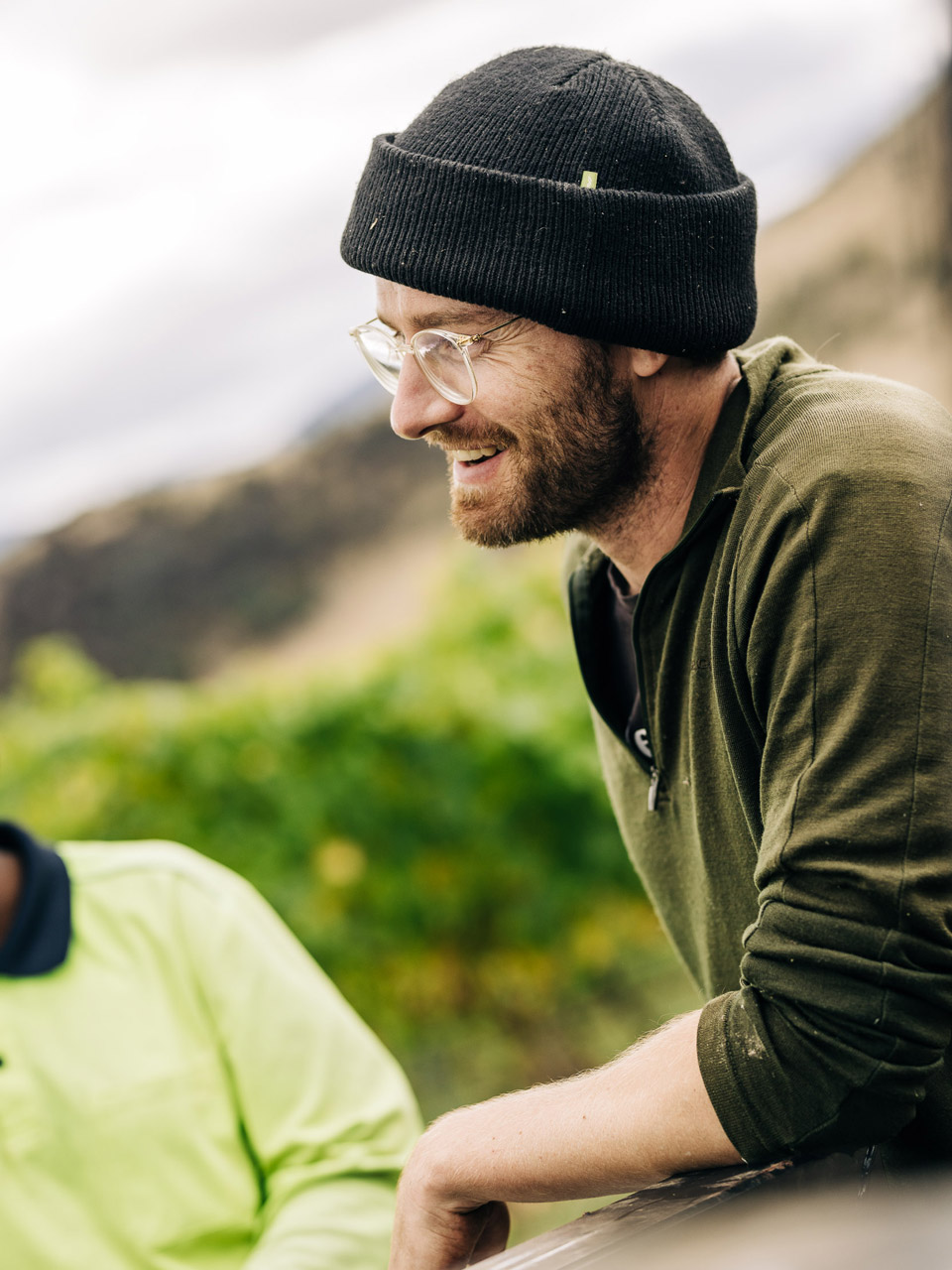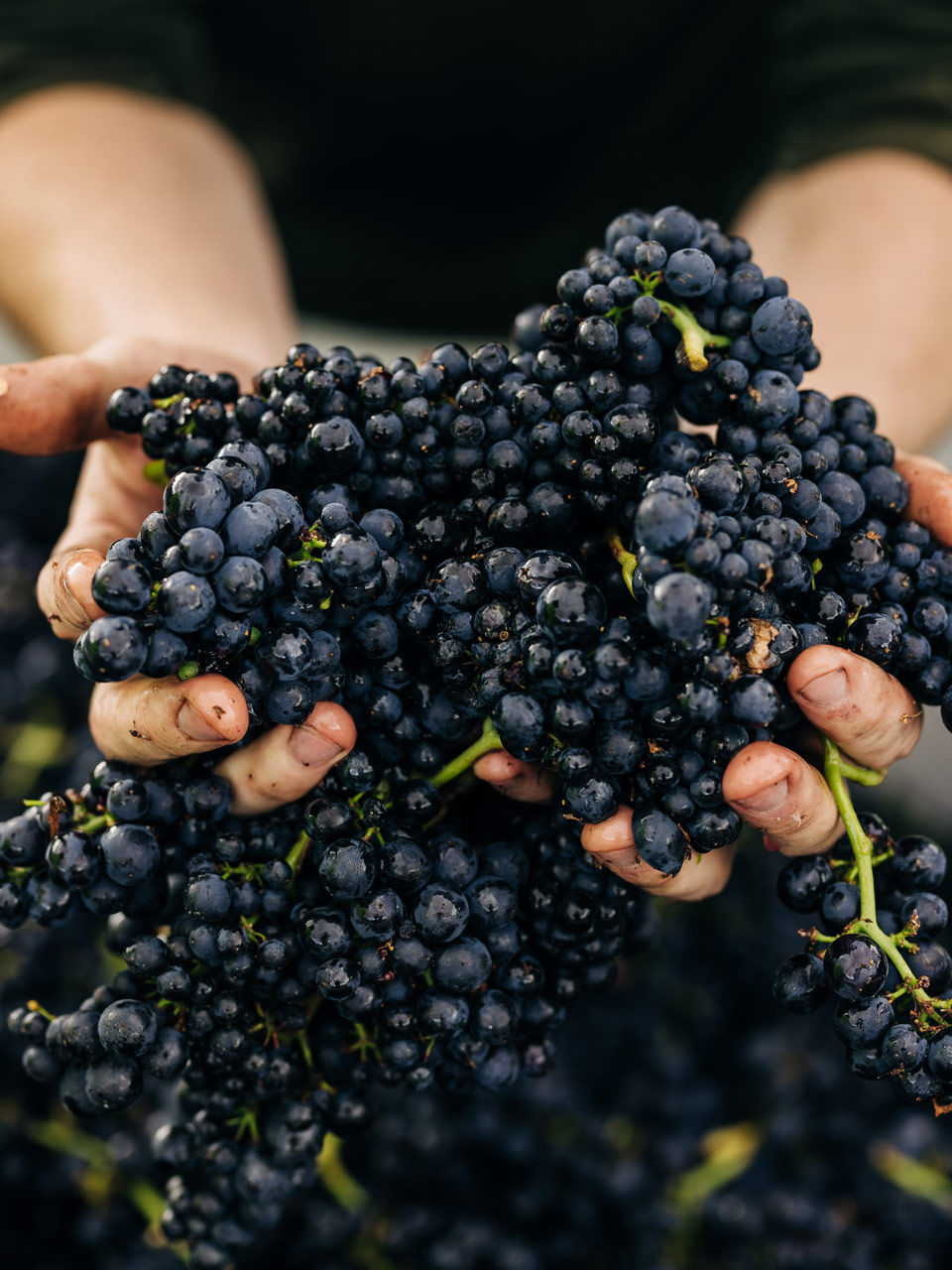Palisandar vineyard, in Tasmania’s Coal River Valley, was originally planted with 1-hectare of pinot noir and riesling vines in 2004, and later purchased by Samantha Connew – the talented winemaker behind the Stargazer label. Since then, Connew expanded the plantings to 5-hectares with the addition of chardonnay, gamay, pinot blanc, pinot gris, and gewurztraminer. The viticulture is managed by Bryn Williams with a holistic approach rather than simply a grape monoculture – providing economic sustainability as well as biodiversity. Palisandar stands out for its depth of pinot noir and chardonnay clones, and unique focus on producing Alsatian blends.
Connew and Williams have adopted a holistic approach to viticulture, emphasizing not just the cultivation of high-quality grapes but also the fostering of biodiversity and economic sustainability within the vineyard. By integrating a variety of plant species and sustainable farming practices, Palisandar transcends the typical grape monoculture, contributing to a richer, more resilient ecosystem. This forward-thinking strategy ensures that the vineyard not only produces exceptional wines but also supports the environmental health of the region, embodying a true commitment to both the land and the legacy of Tasmanian wine.
Samantha Connew, the visionary behind Palisander Vineyard, offers insightful reflections on how her vineyard’s unique location within the Coal River Valley contributes to its distinct wine profile. Comparing the site of Palisander to other vineyards in the region, Connew says: “In terms of the broader region, our vineyard probably has a slightly bigger diurnal temperature range than others. We tend to be a little bit cooler overnight than others and we are certainly one of the later sites in the Coal River Valley so have some extra time for flavour development.”
Expanding her insights to encompass the wider Tasmanian wine landscape, Connew highlights the distinctive viticultural attributes of the Coal River Valley compared to other Tasmanian (unofficial) sub-regions: “Riesling, chardonnay and pinot noir are all ideally suited to the Coal River Valley and particularly this little sub region of Tea Tree. We have really high calcium levels in our soils which helps with soil moisture-holding capacity as well as disease resistance. Calcium is a building block of strong cell walls and mainly found in grape skins, which I think is one of the reasons we have such thick skins in our Riesling. We also have quite a different acid structure in our whites; whilst our pHs are low, our TAs are not super high and the acid is more sherbetty and tangy rather than linear and piercing, resulting in the wines being more approachable when young.”
Delving into the winemaking process, Connew elaborates on how the distinctive characteristics of riesling grapes from Palisander Vineyard are enhanced through specific vinification techniques. She illustrates how the unique skin attributes of the riesling grown translate to winemaking decisions: “The riesling is also from the older section of the vineyard and is wild fermented in ceramic and concrete eggs following up to 12 hours skin contact. The decision to use skin contact was made after several years of tasting the fruit and observing the impact of the thicker skins both on disease resistance but also the flavour in the skins. This is encouraged by early season shoot thinning and exposing the bunches to sun as well as lateral thinning later in the season. The resultant wine demonstrates the impact of positive phenolics in riesling, a very different perspective to how most winemakers make this variety in Tasmania.”
Overseeing the viticulture, Bryn Williams collaborates with Connew to enhance the overall working environment, which connects to their philosophy of ‘sustainability’. “The focus as a small business has been on nothing going to waste, so many of our projects are about efficiency and financial sustainability which has in turn led to increased environmental and social sustainability as well. An example of the latter is investing a significant amount of time in encouraging a range of different activities on site which all contribute to our biodiversity, but which also break up the monotony of grape growing and make the vineyard a more enjoyable place to work.”
Williams expands on these activities: “We treat the vineyard in a more holistic fashion as a farm rather than simply a grape monoculture. In addition to the olives and native vegetation corridors, we also have an orchard of nut and fruit trees and have recently planted a range of berries. We have two bee hives, some free-range chickens and sheep who graze the vineyard in winter, as well as a worm farm from which we hope to use the worm tea in the vineyard this year.”
But there’s a bigger picture and a longer term view that drives William, too. “Our philosophy is very much based on leaving our plot of land better than we found it, “ he says. “So we have done an extensive amount of work with Landcare supported both with grants from them and with our financial and time investment in establishing three native vegetation corridors (comprising over 1000 plants) with another one planned for the spring of 2024. These areas are all thriving and providing a home for the beneficial insect populations we are trying to encourage.”
Williams drills down to the efforts focused on the soil health. “All green waste and grape marc are retained to be used in our compost program which is then spread under vine in either spring or autumn, and rather than simply creating burn piles of olives trees from a grove which was removed to plant extra vineyard, the trees were transplanted to an additional area deemed too marginal for vines. The olive oil produced is used as gifts for Stargazer wine club members.”
This management has paid off tangibly in the vineyard, as Williams shows: “Our site management plan requires us to do soil tests each year. Pleasingly, since 2016 when we took over the site, we have been able to increase organic carbon levels from 3.5% to 4.3% in the most recent test.”
Williams describes their response to climate change: “Whilst Tasmania has been relatively insulated from the impacts of climate change, we are certainly aware of what is on the horizon. For this reason, we have planted a broad range of different chardonnay and pinot clones in the new blocks as an insurance policy and also have a range of different exposures and row orientations for all of our different management units.”
“Everything is a slow burn on a vineyard level; it all happens on a level of incremental knowledge rather than a single lightbulb moment.”






